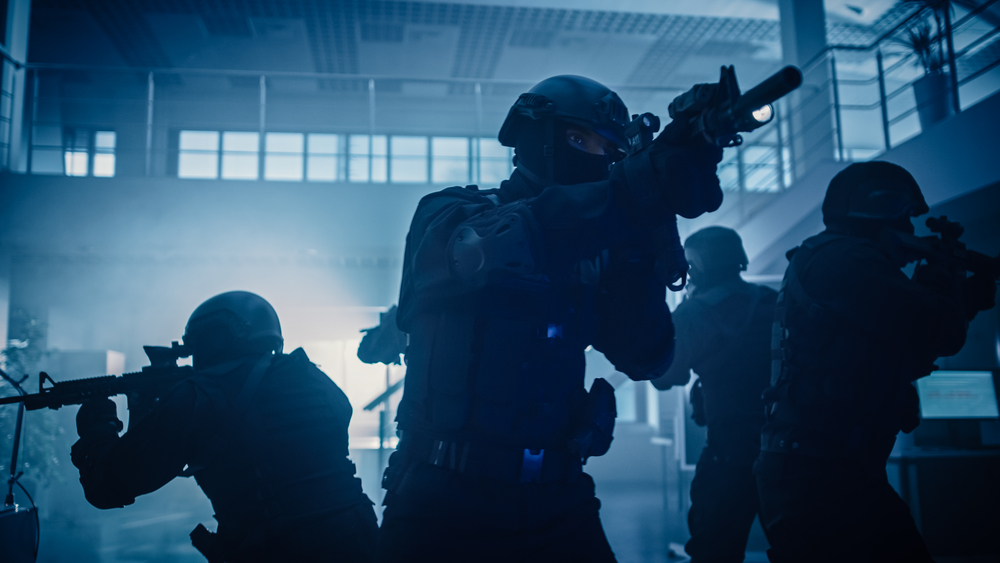Blurring Posse Comitatus: The Increased Militarization of Police

This is the second in my series of posts on the social costs of drug prohibition. You can read the first post here.
In 1878, Congress passed Title 18 U.S.C. §1385, commonly known as the Posse Comitatus Act, to address the question of using the military for the purposes of civilian law enforcement. Previous uses of the military, such as to quell rioters during the Whiskey Rebellion (1791 – 1794), ended in disaster, prompting legislators to ban the use of military personnel to enforce domestic law, except in defined circumstances. The underlying issue with using the military for such purposes lies in its function; because soldiers are trained to neutralize or eliminate the problem, matters of due process or civil liberties are not their paramount concern (Marsh, 1991). In enforcing domestic law, civilian police departments ostensibly must safeguard civil liberties while enforcing the law.
However, these lines have become increasingly blurred in the prosecution of the War on Drugs™. In 1981, the Military Cooperation with Law Enforcement Act (MCLE) was passed to allow the military to cooperate with local law enforcement to more vigorously pursue the interdiction of traffickers. MCLE allowed the military to extend police access to military bases, research, and equipment, as well as provide training on the use of military equipment (Cooper, 2015). Clinton’s 1997 expansion of transfers to local departments in the form of the 1033 program gave preference to departments engaged in counter-drugs and counterterrorism activities. Subsequent laws, such as the Defense Drug Interdiction Assistance Act of 2011 provided for even more assistance from – and cooperation between – the military and local law enforcement in the name of resolving the transmission, sale, and use of prohibited drugs.
Not only have state and local law enforcement availed themselves of equipment and intelligence, but they have also adopted the mannerisms and techniques of battle operations via the formation of elite paramilitary Special Weapons and Tactics (SWAT), Special Response Teams (SRT) and Police Paramilitary Units (PPU) units. These units were once an outlier, with their roots in incidents such as the Watts riots and the Texas Bell Tower shootings in the late 1960s (MacDonnell, 2016). The idea behind these units was for them to act as a force of last resort in situations where normal units would be incapable of responding, especially instances in which suspected criminals were likely to be heavily armed. While the original SWAT team formed by Los Angeles Police under the leadership of Officer John Nelson and future police chief Inspector Daryl Gates captured the public imagination, they largely remained an anomaly prior to 1973.
The declaration of war against drugs created a confluence of interests that incentivized these paramilitary police units. Now, not only are they a staple of major metropolitan police departments, but many smaller departments also employ them as well. At least 90% of departments serving population of at least 50,000 citizens have established some sort of SWAT or PPU unit. It’s not all that surprising, as the will to divert enforcement resources to align with Washington’s mission to eliminate drugs results in a windfall of free-to-low-cost equipment, training, and information sharing. As an added bonus, this paradigm is self-perpetuating; the less effective interdiction and community cleansing efforts are, the greater the justification to spend more redoubling these efforts.
It must be noted that despite the vast number of resources afforded these units, only a small number of officers receive this training and become part of them, and many that do eventually rotate back to regular duty. Therein lies the problem; as these officers who have been trained to see traffickers, suppliers and users as enemies to be defeated on the hostile terrain that is their communities blend back into regular units, their perspective has been observed to greatly influence their fellow officers. Williams and Westall (2003) found that despite the difference in the likelihood of suspect violence between calls for SWAT and non-SWAT officers, the difference in use of lethal force between the two groups is negligible.
In this manner, policing has veered away from the model of crime prevention to one of arrest maximization. With keeping the peace having given way to seeking out confrontation, avenues to create this confrontation have expanded, from “no-knock” home raids to traffic stops targeting potential drivers carrying large amounts of cash. This confrontational approach, quite naturally, escalates the likelihood of violence, a subject that will be covered in greater detail later. Some scholars estimate that SWAT units are deployed at a conservative estimate of 60,000 time per year, with 62% of those deployments executing warrants related to drug offenses, often using techniques such as no-knock raids. Paramilitary police units have also been used patrol high-crime areas in full riot gear, exacerbating the image of communities under siege.
In my next post, I will turn to the issue of civil asset forfeiture.
Tarnell Brown is an Atlanta based economist and public policy analyst.
